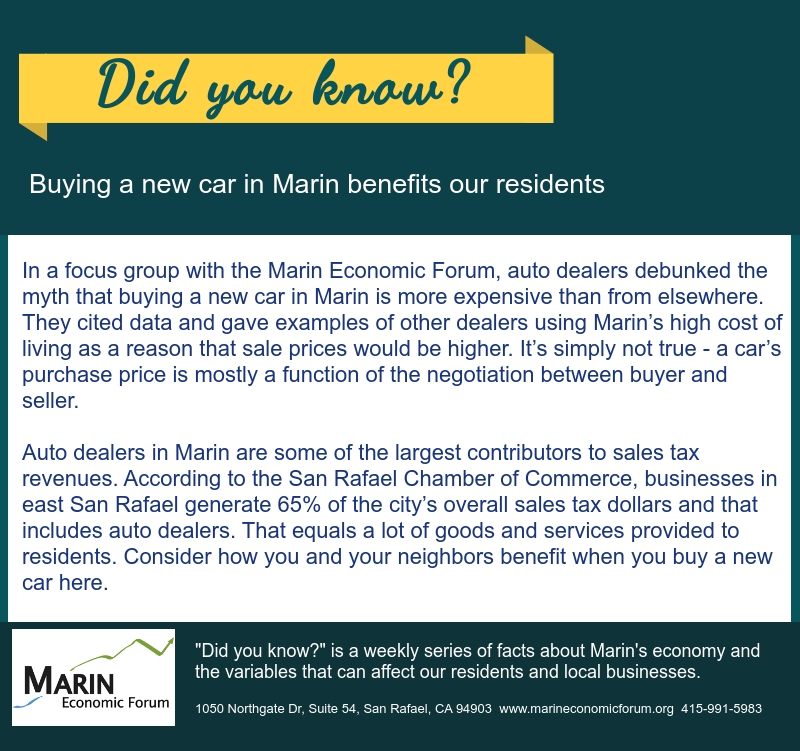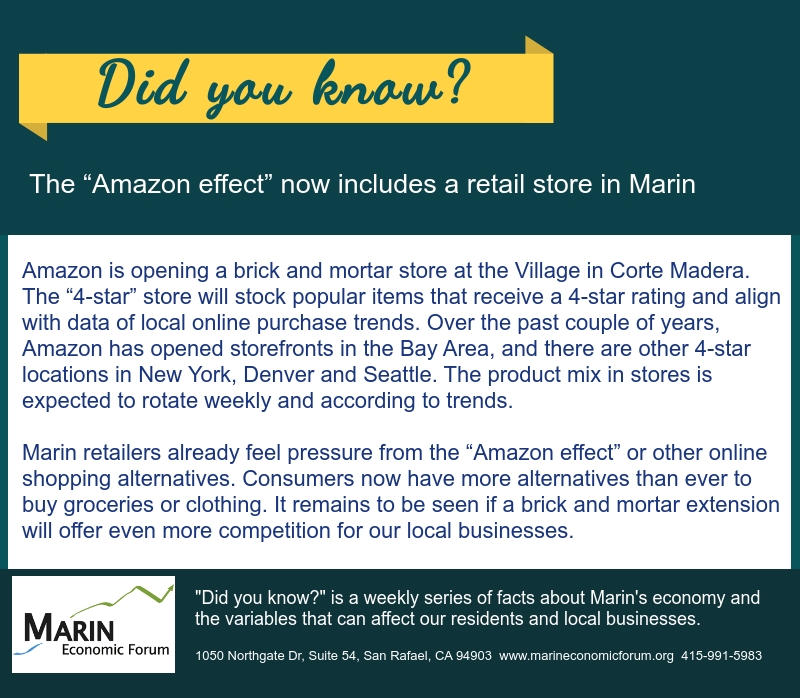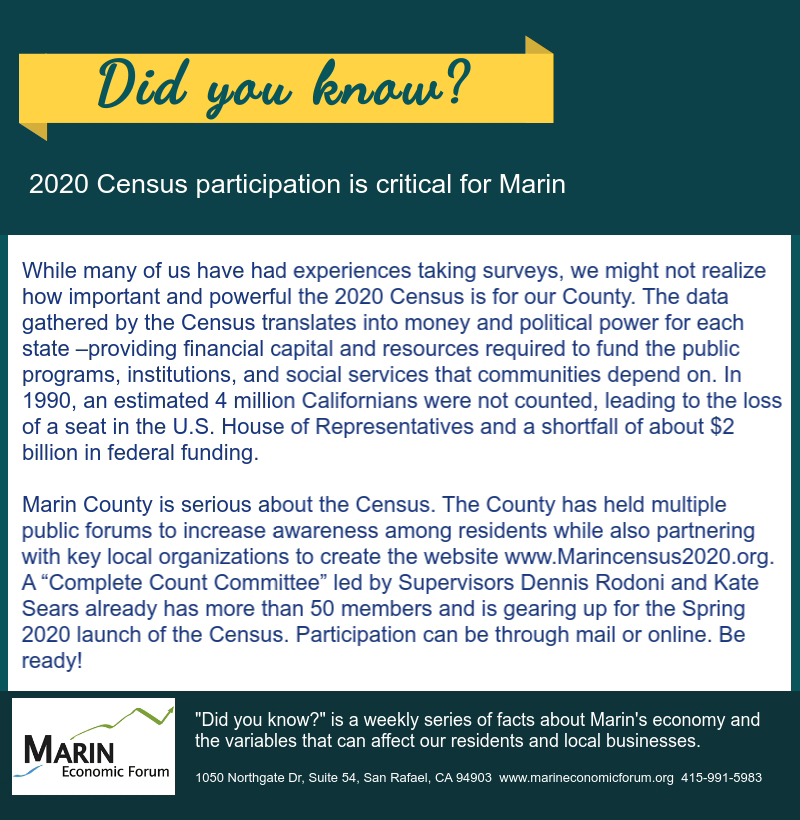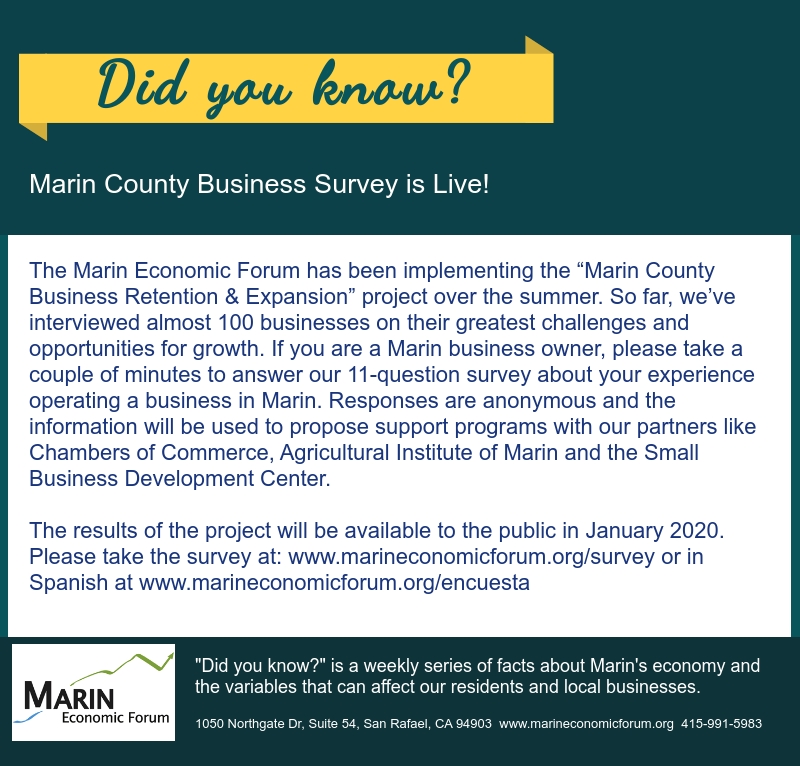December 17, 2019 Did You Know?
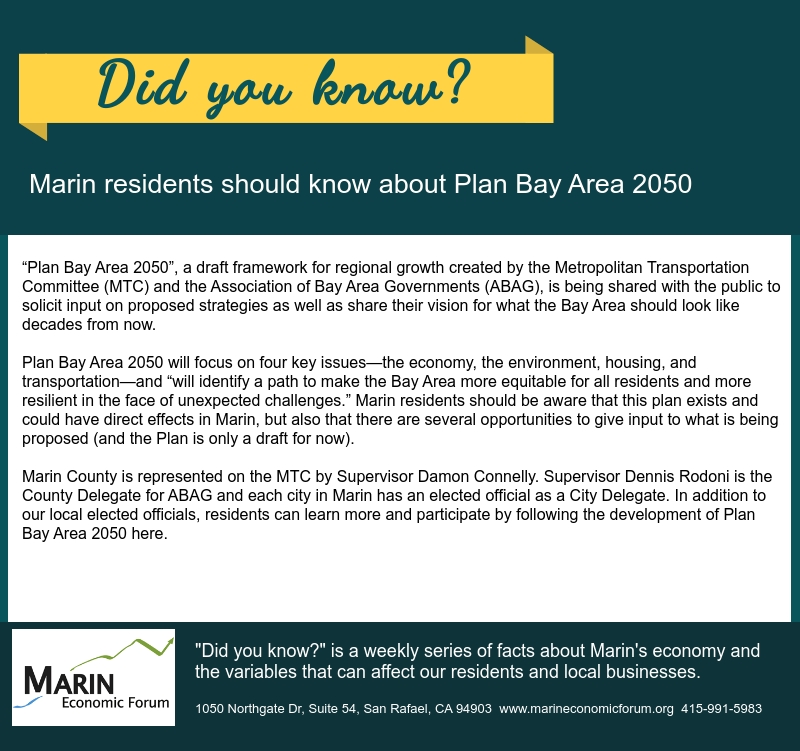

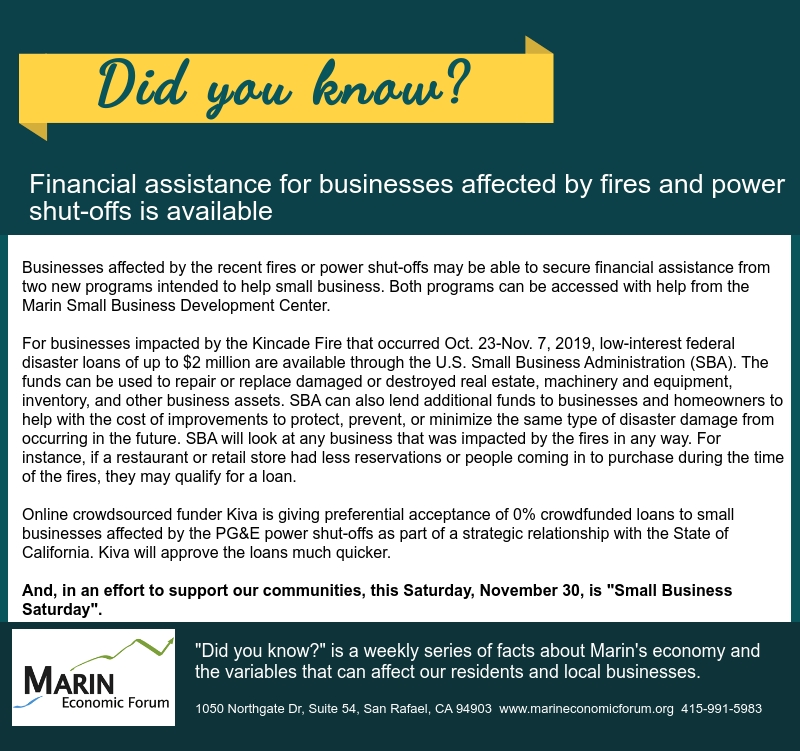
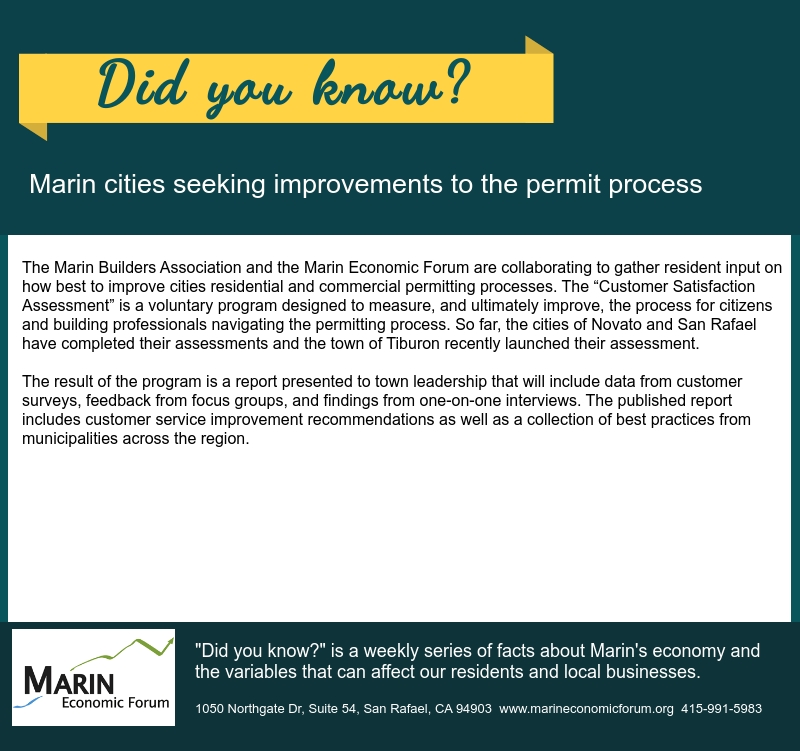
When the lights go out, your business is dead in the water, right?
No, it isn’t.
This is 2019, and for many companies, disaster-recovery planning and remote working can allow them to continue a normal tempo of business despite disasters.
November 14, 2019
On November 7-8, I attended the California Economic Summit, a 2-day conference of public, private, and civic leaders in California. The event was hosted by California Forward with a purpose of developing key policy positions and action plans that will lead to sustainable economic development across the whole of California. This year, the event took place in Fresno, which was significant given the focus of Governor Gavin Newsom on inland California regions, which haven’t shared in the economic success of the State, especially since the Great Recession. Many senior State and local elected officials were in attendance, including newly appointed Chief Service Officer Josh Fryday (formerly on the Novato City Council) and Marin County Supervisors Damon Connelly and Dennis Rodoni.

During the Summit, participants discussed how to approach California’s biggest problems through a set of concurrent sessions on “Housing, Mobility, and Connectivity”, “Lifelong Learning”, “Prosperous Economies, Thriving Workers”, and “Ecosystem Vitality and Working Landscapes.” As you might imagine, engaging on these issues with hundreds of peers yielded rich conversations and debate. At the end of all of it, three things stood out to me for Marin as these issues are addressed:
The State is encouraging regional collaboration in economic development. In September 2018, then Governor Jerry Brown vetoed AB 2596, which would have required a statewide economic development strategy. Fast forward to May 2019 and current Governor Gavin Newsom introduces the “Regions Rise Together” initiative, prioritizing regional solutions and strategies for more inclusive economic growth in the State. The Summit directly supported that initiative by emphasizing regional solutions and sharing examples of regional success stories. What does this mean for Marin?
First, Marin should ensure participation in regional dialogues, both in the public and private sector channels. Although our local government officials do engage regionally through entities like the Association of Bay Area Governments (ABAG) and the Metropolitan Transportation Commission (MTC), among others, businesses, as well as some of our non-profits on the front lines of difficult socio-economic issues, also need to engage regionally.
Mike Blakeley, CEO
Marin Economic Forum
October 22, 2019

If you are anything like me, you have enough skill to do a simple job around the house thanks to lessons from mom and dad or that summer job where had to run a machine. You may have recently ventured into the world of do-it-yourself YouTube videos, where a study shows that 51% of users find the site useful for “figuring out how to do things they haven’t done before.” However, for any serious electrical, plumbing or auto repair, you probably turn to a professional. Problem is, here in Marin people with critical trade skills are diminishing. I’ll get to why this is happening but first it’s useful to consider the situation at the national level.
A 2018 news article in the Washington Post succinctly summed up the problem: “An unprecedented skilled labor shortage exists from a combination of the Great Recession’s record levels of unemployment, industry veterans leaving the workforce and the fact that many high school graduates are not interested in blue-collar jobs.” The same article cited an important finding by Manpower Group:
“Skilled trades (electricians, carpenters, welders, bricklayers, plasterers, plumbers, masons and more) have maintained the No. 1 position in vacancies from 2010 to the present.”
That is almost 10 straight years of leading the nation in vacancies.
The picture is just as grim for manufacturing jobs-which include some of the same certifiable skills demanded in the trades. According to a study by the National Association of Manufacturers and Deloitte Consulting, there are over 2 million vacant new jobs in the manufacturing sector expected by 2028. Combined with over 2 million retiring workers from the sector in that timeframe, they estimate the US economy could lose $2.5 trillion in gross domestic product (GDP).
The issue is not the result of trades jobs not compensating well. The Washington Post article included data from the Bureau of Labor Statistics (BLS) which showed the median annual wage (the wage at which half of the people make more, half make less) for an electrician is $52,720 with the top 10 percent making $90,420 (National average). These wage levels are higher relative to many other non-degree occupations and keep in mind that is nationally-not in high cost of living areas like the Bay Area. Using the First Quarter 2019 State of California Occupational Employment Statistics and Wages (OES) program, we found that in Marin County the mean average annual wage for occupations in the “construction and extraction industries” was $68,807, highest among all other non-degree occupations. Further, the same database showed wages for “managers” in construction and extraction industries and in the “transportation, storage and distribution” categories surpassed $125,000 demonstrating the longer term earning potential for individuals that can advance in those sectors.
Labor markets are highly regional but the situation in Marin County mirrors that of the national level in terms of high demand. Evidence collected by the Marin Economic Forum through interviews with companies in the electrical, plumbing, agriculture and construction sectors confirm their greatest concern is the lack of a pipeline of workers for the future. Those companies cite several reasons for this:
The increasing gap between available tradespeople and demand from Marin residents will surely rise leading to higher costs and longer timelines and that in itself is an economic concern. However, the fact that demand for skilled tradespeople will remain strong for the next decade is a powerful opportunity for young people that may prefer a career pathway that doesn’t include a four-year degree.
To seize this opportunity will require some changing of hearts and minds, with respect to what trades jobs look like today (hint: they are sophisticated and utilize technology) and what kind of compensation a career in the trades can provide. It should also be noted that trades jobs require continued learning.
One place to start is to make data on wages in the trades, including long term income projections, more accessible to high school students and their parents. Second, greater exposure to what trades jobs look like today, via internships and partnerships with industry, can allow young people to make informed decisions about their post-high school opportunities.
Finally, programs like “School to Career” and Regional Occupational Programs and Career Technical Education (CTE) offered through local high schools and the College of Marin, and private initiatives like the North Bay Construction Corps are great examples of the infrastructure that already exists to enable youth to pursue work in the trades.
Realizing the shortage of tradespeople is an immediate career opportunity for good paying jobs for Marin youth is important. Helping them get to those careers should they choose is our challenge.
Mike Blakeley, CEO
Marin Economic Forum
